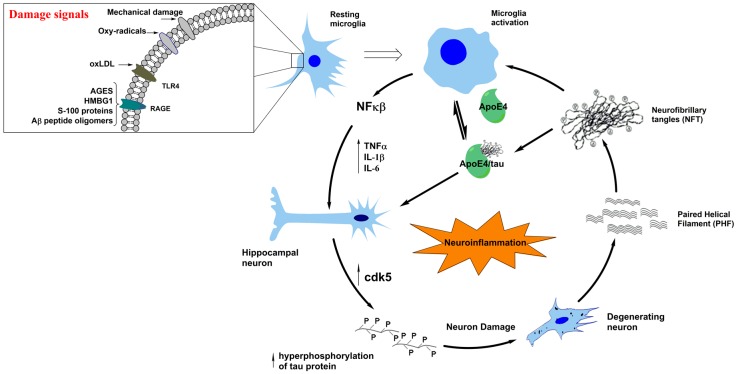Figure 1.
The potential mechanism involved in triggering tauopathies. “Damage signals” (inset at the upper left corner) sensitize resting microglia leading to an activated phenotype. This generates the over-release of increasing amounts of cytokines with the consequent effects on neuronal cells. There is activation of the protein kinase Cdk5, thus stimulating the Cdk5/p35 complex and tau hyperphosphorylation and neuronal degeneration. As a consequence of this processes, tau oligomers and PHFs are released to the extraneuronal environment, reactivating microglia via a positive feedback mechanism. This mechanism is stimulated by the ApoE4 protein. The reactivated microglia continues the cycle by increasing the levels of cytokines with the consequent effects on neuronal degeneration.

